“You know those ducks in the lagoon? Do you happen to know where they go, the ducks, when it gets all frozen over?” —J.D.Salinger, The Catcher in the Rye
Where birds migrate. As a child growing up on a Wisconsin farm, I often wondered where those geese, ducks, and songbirds migrated during the frigid winters (when Gunter and I “migrate” to California). Now, we too follow the seasons and I’m addressing this question again.
Theories and fantasies about bird migration abound. Over the years, however, facts gradually replaced fantasies. A great leap forward occurred when an unhappy stork landed in Northern Germany with a giant African spear rammed through its neck! Now researchers have many tools at their disposal including powerful telescopes and recorded night calls. They glean data from radar readings, satellite telemetry, geolocation, and DNA extraction. By tracking genetically distinct bird populations, they can determine when and where birds are most at risk.
Before researching where “our” Northern Bliss birds go, I decided to list the birds I recognized on our property during our first two weeks here, from May 4 until May 18. First, I heard the screech of the blue jay. I counted six at the feeders. But they were not the primary gluttons for our sunflower seed mix; the Red-wing Blackbirds co-opted that prize. At dawn and dusk, they swooped down in flocks of a dozen or so. I suspect they will continue to raid our feeder until autumn, when wild rice is ready to be harvested at the Apple River, their nesting grounds. Other visitors to the big sunflower feeder were Mourning Doves, Northern Flickers, nuthatches, chickadees, sparrows, Red-breasted Grosbeaks and all species of woodpeckers: Downy, Red-bellied, Ladder, Hairy and Pileated—who dominated the scene as they arrived with their piping calls. I enjoyed watching the smaller goldfinches and warblers at the thistle feeder and my favorite orioles at the orange and grape jelly feeders. And of course, I enjoyed the American Robins who dig for worms in the garden near my lawn chair.
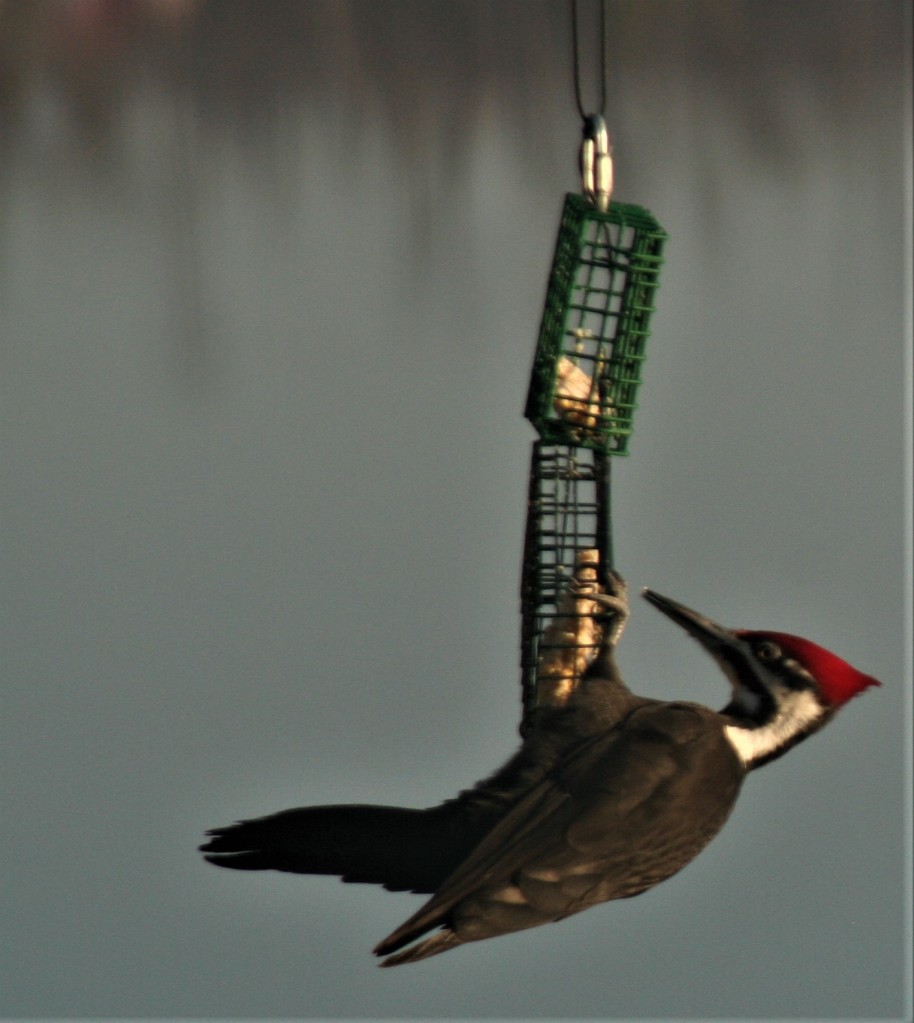
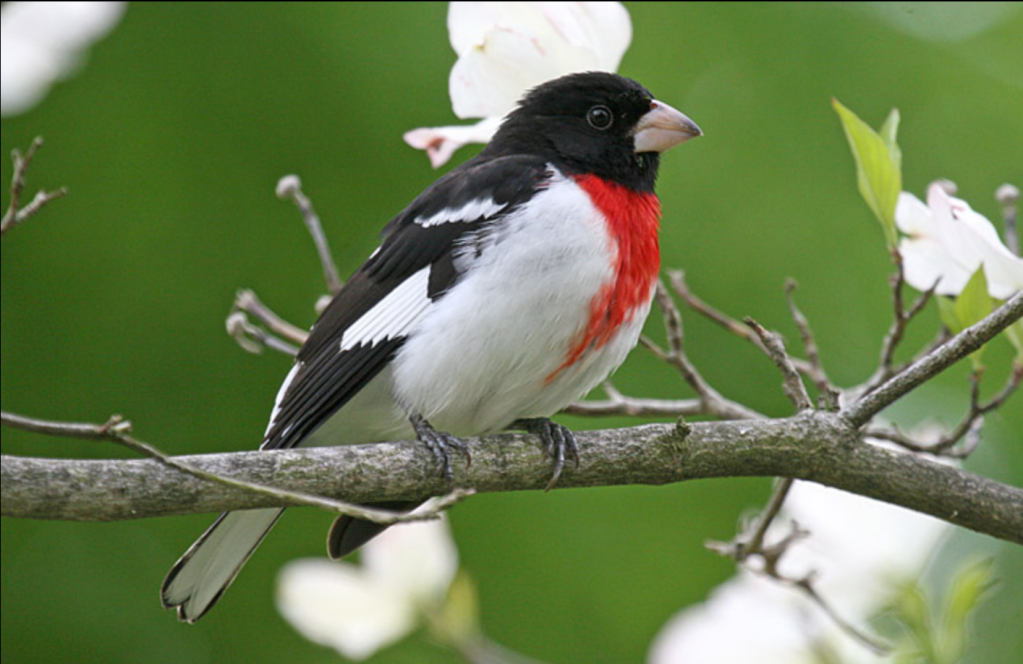
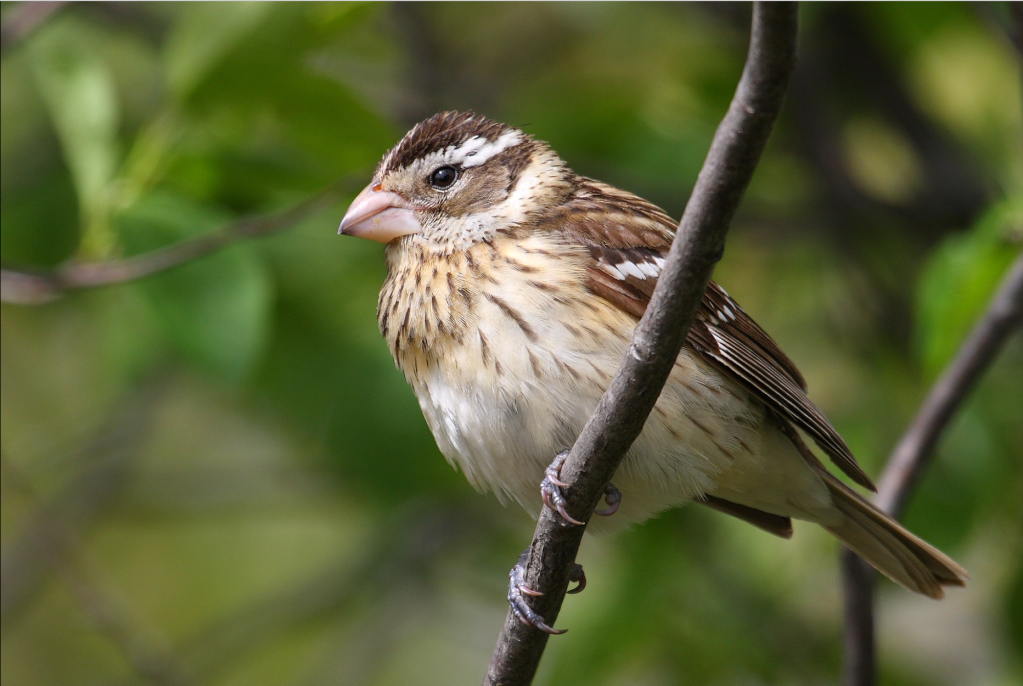
I was elated to know that, to my knowledge, all of our beloved migratory birds had returned. But what happens to those that don’t come back? A few Sundays ago, I read a review in The Wall Street Journal introducing a book called Flight Paths, by Rebecca Heisman. And for Christmas, Gunter had received a book from my niece called A World on the Wing, by Scott Weidensaul. I decided to do some research.
I learned that avian losses have been staggering. North America alone has lost over three billion birds since 1970. Migratory songbirds—dozens of species of warblers, thrushes, vireos, flycatchers, tanagers, grosbeaks and more—migrate mostly at night. They take off just before dark, fly through the night, and land near dawn. If they’re over water, of course, they keep going. Take the Rose-breasted Grosbeak for example: They fly from their North American breeding grounds to Central and Northern South America; most of them fly over the Gulf of Mexico in a single night. No wonder some birds do not return from their treacherous journey!
How Birds Migrate. In the past two decades, our understanding of migration—the study of mechanics that allows a bird to find its way across the globe in the face of crosswinds, storms and exhaustion—has exploded. For example, we’ve known since the 1950s that birds have a “biological compass” that allows them to use the earth’s magnetic field to orient themselves. They had discovered magnetic iron crystals in the birds’ heads! Recently, however, we’ve learned that vision plays a larger role. If one exposes a bird to red wavelengths instead of natural white light, it loses the ability to orient magnetically, regardless of the amount of iron in its head.
Recently scientists found that a bird may visualize the earth’s magnetic field through a form of quantum entanglement. According to Weidensaul, “Quantum mechanics dictates that two particles, created at the same instant, are linked at the most profound level—that they are, in essence, one thing, and remain entangled with each other so that regardless of distance, what affects one instantly affects the other…Even Einstein was unsettled by the (quantum mechanics) implications …Theoretically, entanglement occurs across millions of light years of space, but what happens within the much smaller scale of a bird’s eye may produce that mysterious ability to use the planetary magnetic field.”
Bird migration encompasses even more mysteries. Did you know that in advance of flights, birds can bulk up with new muscle mass without exercising? Additionally, they double their weight in a few weeks so that they are biologically obese; their blood chemistry resembles that of diabetic and coronary patients. Yet they suffer no harm. They can fly nonstop for days, yet show no effects of sleep deprivation. They can shut down one hemisphere of their brains for a second or two, switching back and forth as they fly through the night. Migrating birds also take thousands of mini-naps. (I’m jealous.)
Across the globe, we know more and more about the life-and-death challenges birds face during their travels. That brings me back to my original question: what happens to those who don’t come back?
Would YOU eat a songbird? I skipped through the parts of both books which emphasized that to save the birds we need to save the forests. “Lose one part of the wintering range or one critical in between and you may lose an entire regional population,” Weidensaul reminds us.
I decided to focus on the sections where I had limited knowledge, such as the slaughtering of songbirds for food. A few weeks ago, if someone had asked me in which area of the world the most songbirds had been killed, I would have guessed parts of Africa or Asia in which people are starving. Imagine my surprise when I learned that Mediterranean countries are major culprits! And the small island of Cyprus takes the lead.
Until now, I didn’t know that Cyprus is the nexus of great migratory flyways connecting Central Europe to Africa and the Middle East. Every spring, some five billion birds arrive from Africa to breed in Eurasia. And every year, millions never leave, killed deliberately by humans. Here’s how it works:
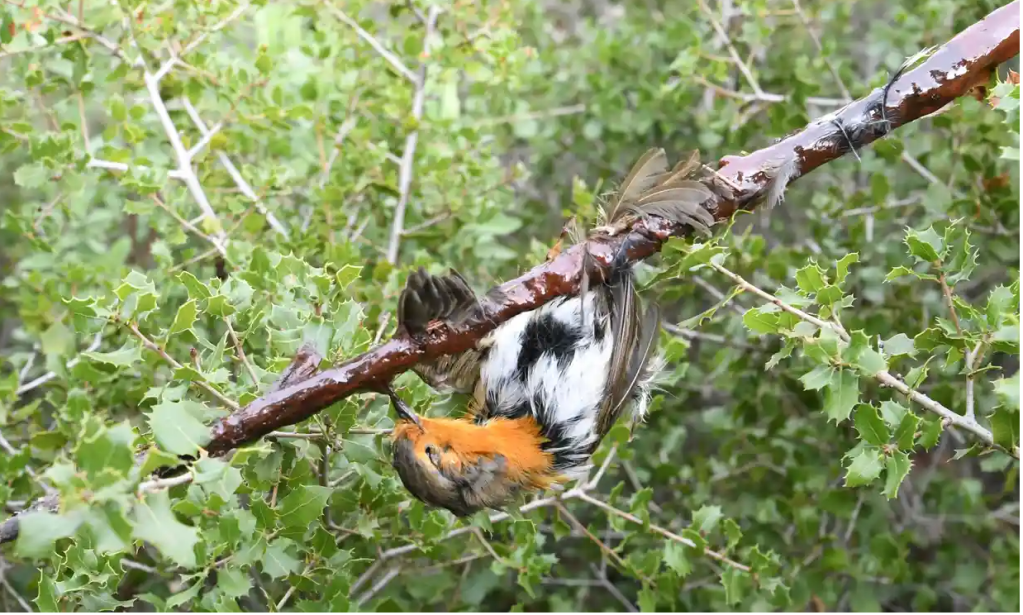
At night, trappers unfurl mist nets in olive groves or stands of acacia trees that are irrigated and intended to provide a rest stop for weary, southbound migrants. A trapper flips a switch on a digital recorder and broadcasts through bullhorns into the night sky. Sounds of thrushes and blackcaps fill the air. Migratory birds drop to the trees in response to the calls, filling up the thickets. At dawn, trappers toss handfuls of pebbles into the trees, flushing the tired birds into the nets—where they are killed and thrown into buckets. Other birds, foraging through shrubs, find themselves stuck fast to gummy “lime sticks” coated with natural glue boiled down from honey and local fruit. Trappers rip them free, leaving skin and feathers behind. The next evening, the birds will be cooked in hot oil, dusted in salt, and served in homes and restaurants as a delicacy—usually whole, bare head attached. In Cyprus, this dish is known as ambelopoulia. For an island about two-thirds of the size of Connecticut, the toll is staggering: in 2016, Bird Life estimated that trappers were killing between 1-3 million birds annually—the worst place, per capita, for such slaughter in the entire Mediterranean.
Cyprus isn’t the only death trap for songbirds. Syrians illegally kill 3.9 million birds per year, Lebanon, 2.4 million, and Egypt 4.5 million. However, the most dangerous place for songbirds is Italy, where some 5.6 million passerines are killed each year. They are used in traditional dishes such as mumbuli (spiced and grilled songbirds) or polenta e osei (cornmeal mush topped with whole grilled birds).
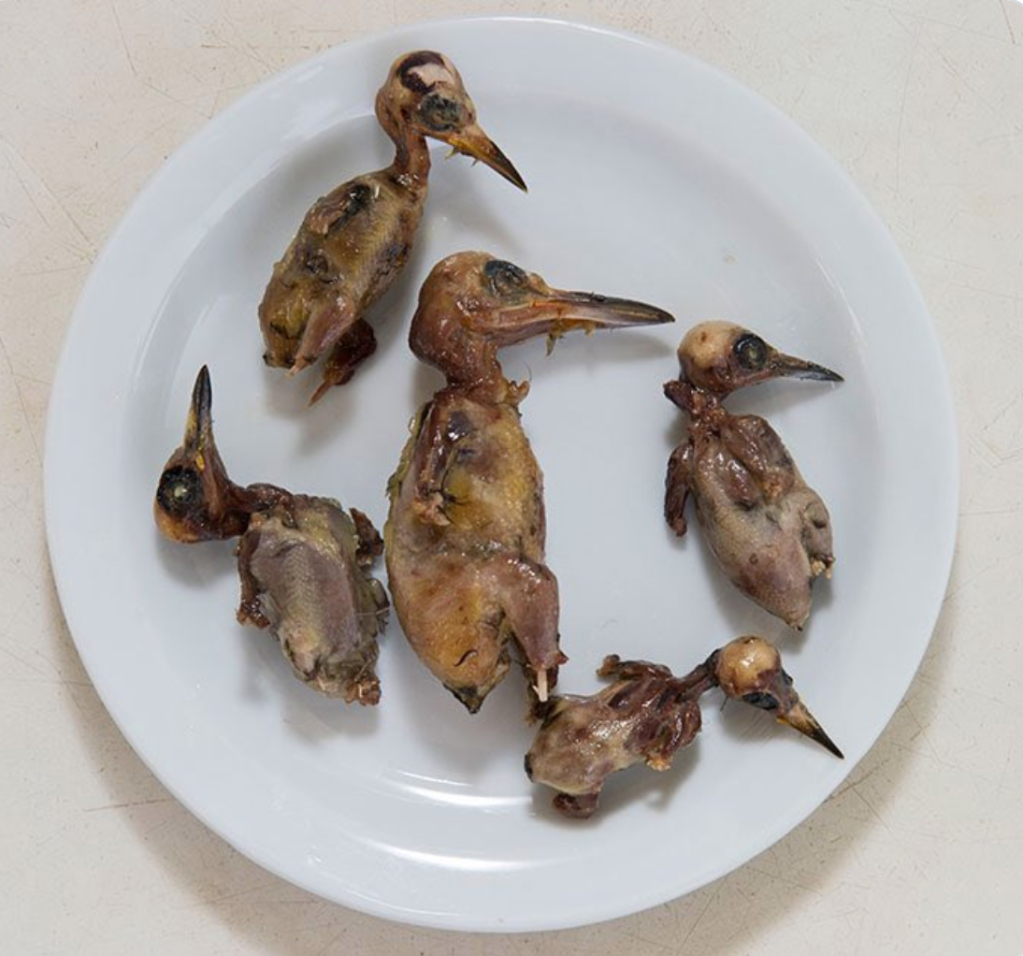

The French kill another half a million birds. Thrushes are lured with clumps of red rowan berries and strangled by simple nooses of horsehair. Relished as the epitome of French gastronomy is the Ortolan Bunting—a six-inch long bird with a peach-colored breast, pale yellow throat, black mustache, and yellow eye-rings. En route to Africa, these songbirds are trapped, kept in the dark to scramble their natural rhythms, and overfed until they’re bulging with fat. Then they are plucked, drowned in brandy, and baked whole in a sizzling hot cassoulet. The diner—neck and shoulders draped in a large white napkin to soak up splatter—severs the head with a snap of the front teeth, then chews the rest of the bird, bones and all, in a “soaring cascade” of grease and juices. Anthony Bordain—who was an American celebrity, chef, author, and travel journalist—called Ortolan “the grand slam of rare and forbidden meals.”
Netting Ortolans is illegal in some countries and not in others, but their trade is prohibited by the European Union, and France has banned the dish. Even so, some connoisseurs who know the right people manage to find it.
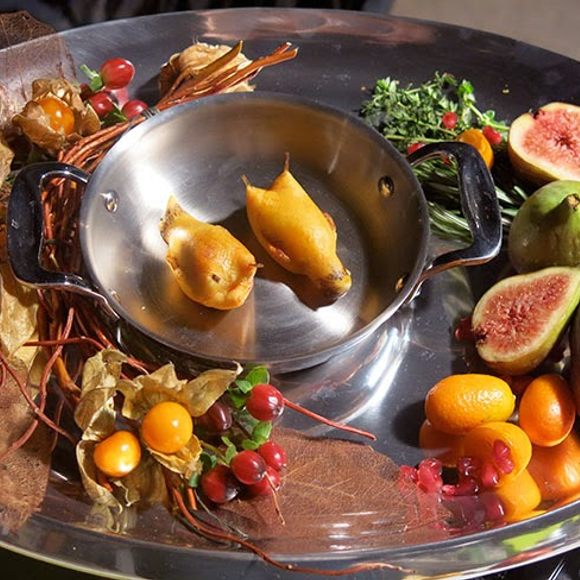
***
As I relax on my patio, the sweet and soulful songs of birds fill me with emotions. Can one respect a songbird? Or is what I feel more like admiration? It’s overwhelming to envision that such a seemingly fragile animal can link the tundra at the far north with humid rainforests in the tropics and all the lands in between. I revere them for taking on such a feat, despite every obstacle we humans have put in their paths. Through their worldwide flight logs, they knit the wild places of the world together with their songs, their endurance, and their determination to return to their breeding grounds year after year. I delight in sharing the joy these small birds provide to me every day.
Related blogs:
How to Drain a Wet Lot https://sailorstales.wordpress.com/2014/09/29/how-to-drain-a-wet-lot/
I Never Promised You a Rain Garden https://sailorstales.wordpress.com/2015/08/26/i-never-promised-you-a-rain-garden/
Returning to Northern Bliss: Fifty Shades of Green https://sailorstales.wordpress.com/2016/06/15/returning-to-northern-bliss-fifty-shades-of-green/
Day Tripping in Burnett County: Crex Meadows Wildlife Area and Burnett Dairy https://sailorstales.wordpress.com/2021/06/27/day-tripping-in-burnett-county-crex-meadows-wildlife-area-and-burnett-dairy/
About the Author: Lois and Günter Hofmann lived their dream by having a 43-foot ocean-going catamaran built for them in the south of France and sailing around the world. Learn more about their travel adventures by reading Lois’s award-winning nautical adventure trilogy. Read more about Lois and her adventures at her website and stay in touch with Lois by liking her Facebook page. Lois’s books can be purchased from PIP Productions on Amazon and on her website.